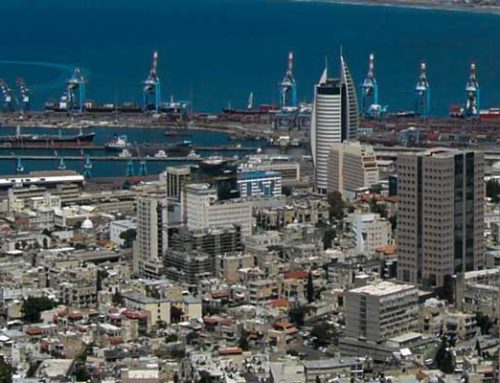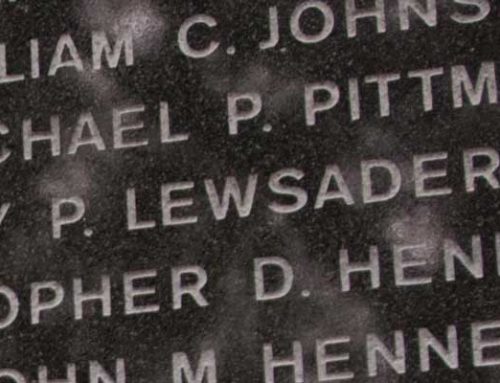Afghanistan is a poor, mountainous, landlocked nation in Central Asia. Many armies have invaded Afghanistan, but no army has ever been able to survive the rugged land or dominate the fierce, proud Afghan people for a significant period.
The Soviet Union invaded Afghanistan in 1979. More than 100,000 Soviet troops used sophisticated weapons and brutal repression to control the cities and transportation routes. Still, the Soviet army was no match for the mujahedeen, the Afghan warriors who used their knowledge of the land to inflict damage on the Soviet forces. The Soviets withdrew from Afghanistan in 1989 and ceased to be a world power for over twenty years.
The war drained Afghanistan tremendously; about a third of the population fled. The Soviet legacy in Afghanistan would be thousands of land mines. The small explosives were designed to control the mujahedeen, but today the weapons continue to destroy many lives as the Afghan people search for firewood or tend to their animals.
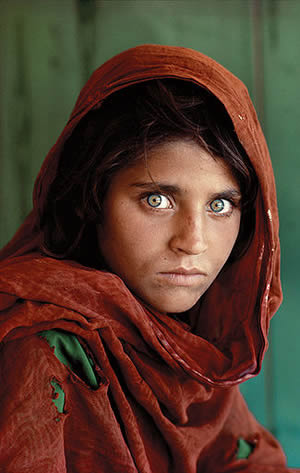
Sharbat_Gula
Twelve-year-old Sharbat Gula as living as a refugee in Pakistan during the time of the Soviet occupation of Afghanistan. Click here to read the story of how a National Geographic team found Sharbat seventeen years later.
The withdrawal of Soviet troops led to a civil war in Afghanistan. A civil war is a war within a nation. Several competing interests fought for control of Afghanistan after the Soviets withdrew their troops. A group of Islamic militants known as the Taliban became popular with many Afghans. Taliban is an Arabic word that means “students.” Some Afghans initially supported the Taliban. They hoped that returning to their ancient land’s traditional customs would erase the civil war’s unhappiness.
Afghanistan is a traditional nation where many women wear burqas. A burqa is a cloak that covers all but your hands and feet.
A tiny crocheted area allows one to see but covers their body in modesty. In the last fifty years, many women have stopped wearing burquas and have gone against the traditional customs of Afghanistan by being educated or taking jobs outside the home.
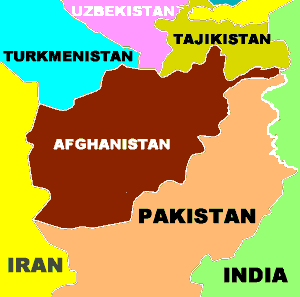
Afghanistan-map
Afghanistan is a landlocked nation in Central Asia.
Once the Taliban took power in most of Afghanistan, they began a violent, repressive rule. The Taliban outlawed television, radio, and even kite-flying; under the Taliban, Afghan women seen in public without their burqua faced severe beatings or death.
When the United States was attacked on September 11, 2001, the American government traced the incident to Osama bin Laden, who had taken refuge in Afghanistan. The Americans demanded that the Taliban turn over bin Laden and other suspected terrorists, but the Taliban refused. The United States led a multinational bomb attack in 2002, forcing the Taliban from power in Afghanistan.
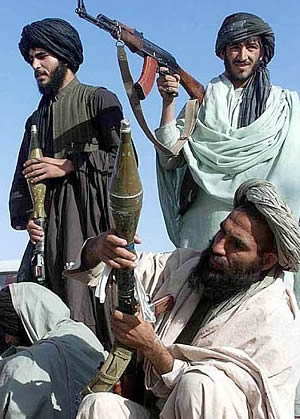
The Taliban is an Islamic fundamentalist political movement in Afghanistan. While in power, the Taliban enforced its strict interpretation of Sharia, though many Muslims have been highly critical of the Taliban’s interpretations of Islamic law.
The Afghan people held national elections in 2004 and chose a democratic government. Women were allowed to vote and run for office for the first time in the nation’s history.
The United States ended its twenty-year occupation of Afghanistan in 2021. Almost immediately, the Taliban toppled the American-backed democracy. The Taliban pledged to rule more gently than before, but girls can no longer attend school past sixth grade.
Resources
Download this lesson as Microsoft Word file or as an Adobe Acrobat file.
Mr. Donn has an excellent website that includes a section on the Middle East and North Africa.
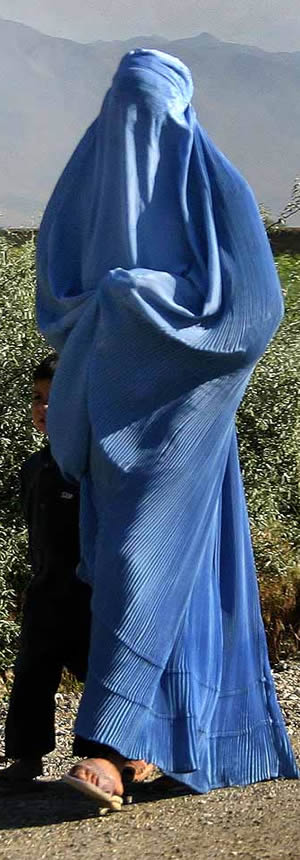
608burqa
An Afghan woman dressed in a burqa.



